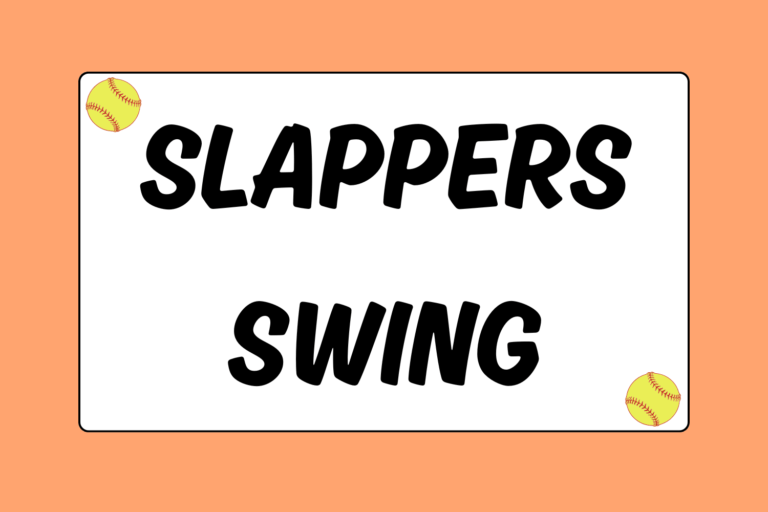In slapping, the footwork is the most important aspect of the technique. But the slapper needs to know when to start her feet. If she is late, she is likely to miss the ball or hit it weakly off the tip of her bat.
If she is too early, she’ll jam herself and hit a weak dribbler off the inside of her bat, right above the handle. Neither of these mistakes results in a good, solid hit — and they decrease the slapper’s chance of safely advancing to first base.
If you know the footwork, but having trouble with your timing, keep reading. This guide breaks down how to time your footwork off the timing mechanism — the pitcher’s motion.
The Timing
The timing for a slap — when to start your feet — is completely dependent on the pitcher’s motion and speed. Usually, slappers using this footwork start at the back of the box. This way, there is less risk of running out of the box before hitting the pitch (this will result in an automatic out).
Below is a breakdown of how a slapper generally times her footwork off the pitcher’s motion. Again, this may change if a pitcher is slower or faster than average:
- The pitcher gets on the mound and brings her hands together: The slapper is cool and calm, daring the pitcher to throw a strike. She is light on the balls of her feet, and her bodyweight is slowly shifting to her back leg.
- The pitcher starts throwing her arm backwards: The slapper is breathing confidently and staying calm.
- The pitcher throws her arm forward, and her body lunges forward at the plate: The slapper is watching her arm closely.
- The pitcher’s arm reaches the top of her windmill: The slapper starts her motion. Her front foot takes its initial step backwards. This is the step that will generally change when the pitcher’s speed is faster or slower than average.
- For a slower pitcher, you may have to wait until her arm is somewhere between the top of her motion and her hip to begin your motion.
- For a quicker pitcher, you will have to start earlier, before her arm is at the top of her windmill. Watch her while you are in the on-deck circle to get your timing.
- The pitcher releases the pitch at her hip: The slapper’s back foot is stepping over and across her front leg. Her hands are starting their motions (the feet lead the hands).
- The ball is approaching the plate: The slapper’s front leg starts to follow through and her hands are in full motion.
- Contact: Contact is made at the slapper’s back hip —while her front leg is following through. With an inside-out¬ swing, the slapper slaps the ball through the 5/6 hole (between third base and the shortstop). All the while, her feet are moving. She does not ever stop her feet in the box (unless it’s a change-up).
- Run: After she slaps the ball, the slapper rushes down to first base to beat out the throw.
Hot Tip: Practice with a Glove!
You probably shouldn’t just read this guide and head into the batter’s box to face a live pitcher — you need to practice the timing first. There is a great way to practice your timing, and it doesn’t even involve a bat!
- Set up in the batter’s box. Have either a live pitcher or pitching machine on the mound. Of course, a live pitcher would be better. But if the feeder for the machine is willing to do the windmill motion on every pitch, that will work just as well.
- As the pitcher goes into her motion, start your footwork. Rather than hitting the ball, you will catch the ball in your glove at your back hip.
- When you catch the ball, stop immediately. Evaluate yourself. Your front foot should have stepped back and your back foot should be crossed over your front leg. This stance should be stable and strong. Your elbow should basically be in contact with your back hip, and your forearm extended straight towards the plate. The ball should be nicely in your glove.
If you do this enough, facing a live pitcher in a game will be nothing!
Watch Her Motion
Remember, timing is based on the pitcher’s motion. The best way to time her and get your footwork down is in the on-deck circle. Better yet, watch every pitch while you are on the bench, too. There should be absolutely no reason for you to go up to the plate without knowing her speed or how quick her motion is.
Also, never let a pitcher quick-pitch you. Between every pitch, step out of the box and take a full practice swing. When you get back in the box, put your hand up to the umpire until you are ready for the pitch. Make the pitcher pitch the ball when you are ready — not her. With enough practice, good timing and proper footwork will put you on the path towards an amazing slapping career!





